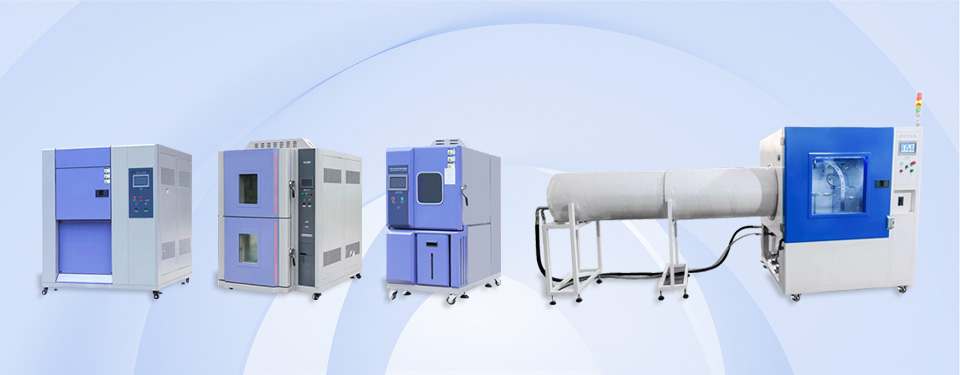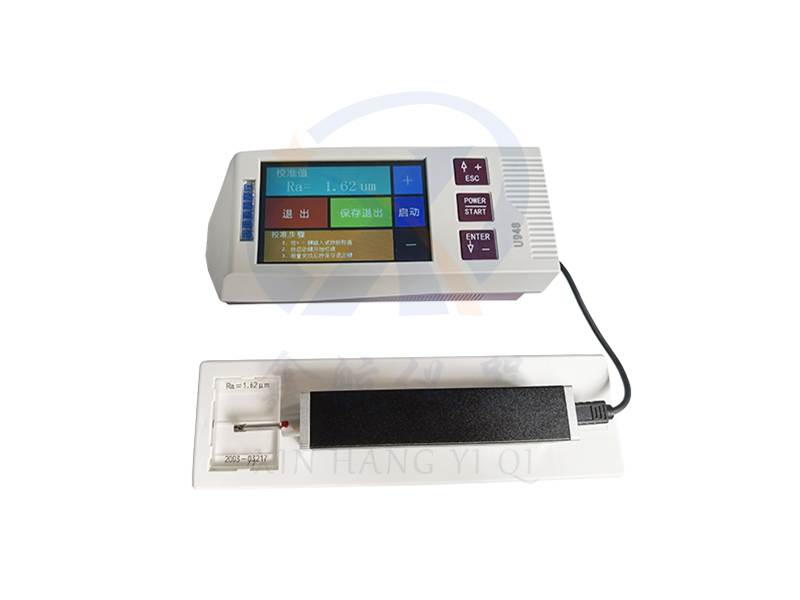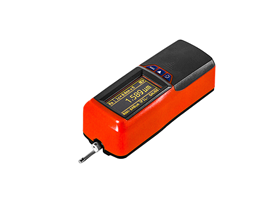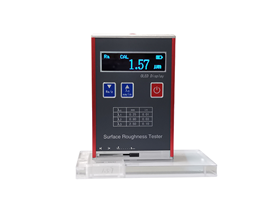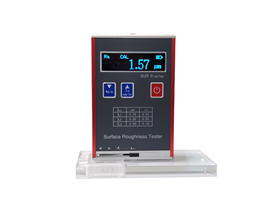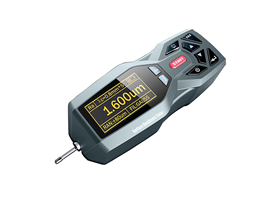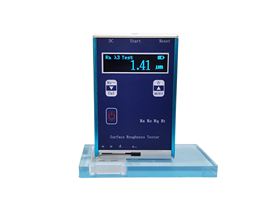summary
A portable surface roughness meter is a surface roughness detection instrument that can measure the roughness of various machined parts, including flat surfaces, inclined surfaces, cylindrical surfaces, curved surfaces, small holes, grooves, and axles.
major function
Mechatronics integrated design, small size, light weight, and convenient to use;
● Integrated and split measurement methods can be freely selected, supporting multiple directions such as lateral and upward measurement;
Using DSP chips for control and data processing, with fast speed and low power consumption;
● Multi parameter Ra, Rz, Rq, Rt, Rp, Rv, R3z, R3y, Rz (JIS), Rs, Rsk, Rsm, Rku, Rmr; Ry; Rmax (parameters such as enhanced Rc, RPc, Rk, Rpk, Rvk, Mr1, Mr2, etc.);
160 μ Large range measurement range (enhanced up to 320) μ m) .
3.5 inch touch color LCD display, digital/graphic display, with backlight, high brightness, wide viewing angle;
● Dual operation with simple buttons and touch screen;
● Support Bluetooth printing and mobile app operation;
● Rich and intuitive display of information, capable of displaying all parameters and graphics;
Compatible with multiple national standards such as ISO, DIN, ANSI, and JIS;
● Built in lithium-ion rechargeable battery and charging control circuit, with high capacity and no memory effect;
● There is a remaining battery indicator icon that prompts users to charge in a timely manner;
● It can display the charging process indicator, and the operator can understand the charging level at any time
● Continuous working hours greater than 50 hours
● Large capacity data storage, capable of storing 100 sets of raw data and waveforms.
Real time clock setting and display, convenient for data recording and storage.
Equipped with power-saving functions such as automatic sleep and automatic shutdown
Reliable anti motor stalling circuit and software design
● Display measurement information, menu prompts, error messages, and various prompt instructions such as power on/off;
Ergonomic shell design, sturdy, compact, and portable.
● Can connect to computers and printers;
It can print all parameters or any parameter set by the user.
Optional accessories include Bluetooth, curved sensor, small hole sensor, measurement platform, sensor sheath, extension rod, micro printer, etc.
Applicable materials
The detection of surface roughness of metal and non-metal tested parts is suitable for various departments such as machining parts, mechanical manufacturing, inspection, and commercial inspection. It is especially suitable for on-site inspection of large workpieces and production lines, as well as external inspection by departments such as inspection, measurement, and commercial inspection, without causing damage to the workpieces.
Basic Principles
When measuring the surface roughness of a workpiece, this instrument first places the sensor on the measured surface of the workpiece, and then starts the instrument for measurement. The precision driving mechanism inside the instrument drives the sensor to slide along the measured surface at a constant speed in a straight line. The sensor senses the roughness of the measured surface through the built-in sharp stylus. At this time, the roughness of the measured surface of the workpiece will cause displacement of the stylus, which changes the inductance of the sensor's inductance coil. As a result, an analog signal proportional to the roughness of the measured surface is generated at the output end of the phase sensitive detector. This signal is amplified and level converted before entering the data acquisition system. The DSP chip performs digital filtering and parameter calculation on the collected data, and the measurement results are displayed on the display or can also be displayed. Output on the printer and communicate with the PC.
Specification parameters
|
project
|
XH-CZ-462
|
|
measuring range
|
Z-axis (vertical)
|
± 80 μ M/± 160 µ m (enhanced)
|
|
X-axis (horizontal)
|
20mm
|
|
Measurement attachments
|
Z-axis
|
0.01 μ M/± 20 μ M
|
|
0.02 μ M/± 40 μ M
|
|
0.04 μ M/± 80 μ M
|
|
0.08 μ M/± 160 μ M
|
|
Measurement items
|
parameter
|
Ra, Rz, Rq, RtRp, Rv, R3z, R3y, Rz (JIS), Rs, Rsk, Rsm, Rku, Rmr; Ry; Rmax, Rc, RPc, Rk, Rpk, Rvk, Mr1, Mr2
|
|
standard
|
ISO, ANSI, DIN, JIS
|
|
graph
|
Support curve, roughness profile, direct profile
|
|
filter
|
RC, PC-RC, Gauss, D-P
|
|
Sampling length (lr)
|
0.25,0.8,2.5mm
|
|
Evaluation length (ln)
|
Ln=lr x n n=1-5
|
|
sensor
|
measuring principle
|
Displacement differential inductance
|
|
Stylus
|
Natural diamond, 90 cone angle, 5 μ M Needle tip radius
|
|
Force measurement
|
<4mN
|
|
Guide head
|
Hard alloy, sliding direction radius 40mm
|
|
Sliding speed
|
Lr=0.25, Vt=0.135mm/s
|
|
Lr=0.8, Vt=0 5mm/s
|
|
Lr=2 5. Vt=1mm/s
|
|
Return Vt=1mm/s
|
|
Indication error
|
Not greater than ± 10%
|
|
Value variability
|
No more than 6%
|
|
source
|
Built in 3300mAh lithium-ion rechargeable battery, DC5V charger for charging
|
|
External dimensions
|
Host: 64 * 53 * 160mm Drive: 23 * 27 * 115mm
|
|
Weight (host)
|
Approximately 380g
|
|
work environment
|
Temperature: -20 ℃~40 ℃ Humidity:<90% RH
|
|
Storage and transportation environment
|
Temperature: -40 ℃~60 ℃ Humidity:<90% RH
|
measuring range
|
Parameters
|
Display Range
|
|
Ra, Rq
|
zero point zero zero five μ M~30 μ M
|
|
Rz, R3z, Ry, Rt, Rp, Rm
|
zero point zero two μ M~320 μ M
|
|
Sk
|
0~100%
|
|
S. Sm
|
1mm
|
|
TP
|
0~100%
|
Standard configuration
|
Roughness tester host
|
1 unit
|
|
Sensor driver
|
1 unit
|
|
Drive connection cable
|
2 pieces
|
|
Standard sensor
|
1 unit
|
|
Multi line standard sample block
|
1 piece
|
|
Test block bracket
|
1 piece
|
|
Adjustable height bracket
|
1 unit
|
|
ac adapter
|
1 set
|
|
instructions
|
1 unit
|
|
Certificate of conformity
|
1 unit
|



